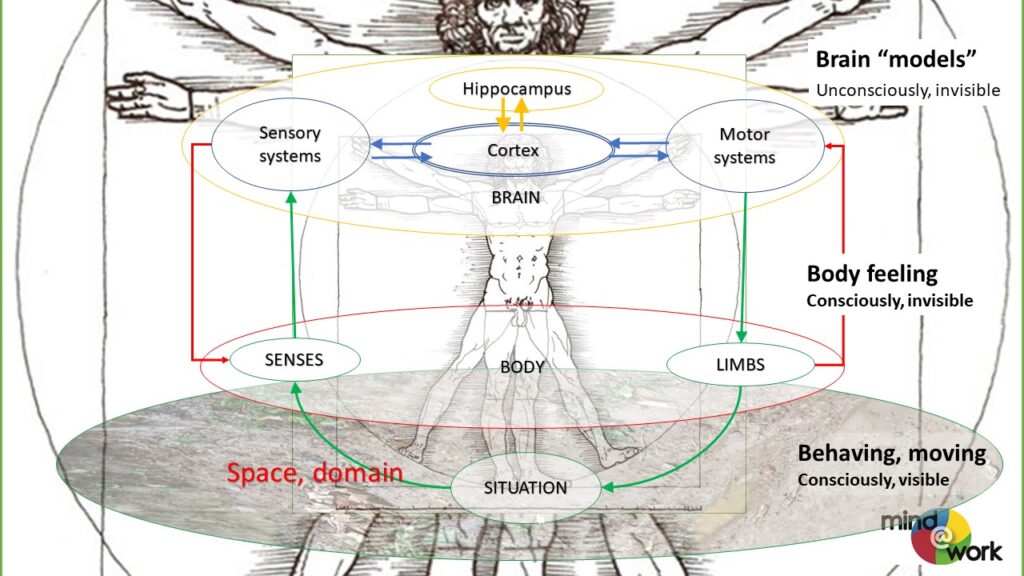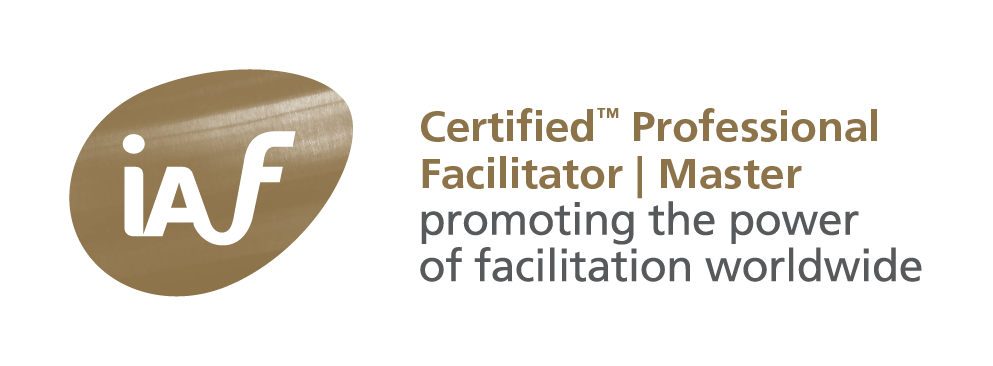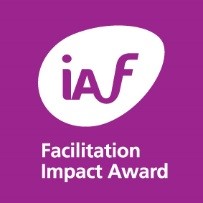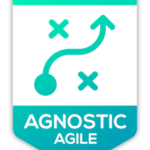Brains actually “add information” to reality. Brains are organs necessary for moving around: sensing and judging. One needs limbs to move, off course, and limbs required guidance. The fact that the left part of the brain is connected with the right part of the body (and the right part of the eye), is not an anomaly, but a simple solution to directed movement. Activating the left side, makes one move to the right, as any rower knows. So the right side, triggers the left side, right?
Simple “nerve cells” – for instance “light/dark sensors” – connecting the right side (left) with the left side (right) will suffice. At the same time, such a “nerve cell” (Latin for ‘cord’ or ‘connection’) “expects” triggers. This is why nerve cells are always “firing” and that the “information” is in the higher/lower activation/inhibition frequency of firing. And this enables three states coding (- 0 +) of signals, which is more efficient than our digital two states coding (- +, it should have been -1 +1).
Combining nerve cells into brains, animals can generate “future predicting patterns”. Patterns of patterns of interacting nerve cells, generating “attractor fields” – semi-stable patterns which one perceives as “thoughts”. Like: ‘I like to say: “is it lunch or am I lunch?”‘.
So not only expects a brain to be given information, it also generates information to evaluate the “data” – givens. It informs itself, uses a kind “tresholds”, limits of expected data, used to trigger “attention”. These trigger levels, off course, have to be learned.
A brain “adds” expectation values – information – to what’s being sensed by the body (motor cycles, we’ve got also sensory cells in our limbs) and senses (eye, ears, ….) . In this way, brains “model” their body, which I can call “self” or “mind”. So mind has to be “embodied” and body has to be “minded”.
While a body “models” its environment (which I prefer to call domain). Our limbs are suited for walking and grasping, but not so much for swimming.
As with the proverbial map: the structure of the model/map accounts for its usefulness. And in the case of organisms, organs organically organize themselves through using each other. The word organ has been derived from the Greek ‘erg’: or “work”. A body needs to work, to work up a mind, working up a body.
And also: “use it or loose it”: when one doesn’t use one’s “modelling body/brain”, one looses the ability to model.
So one’s brain is “operationally closed” – one cannot sense how it’s operating without destroying its working – and informational open, in the sense (!) that one expects to be informed.
Implications for facilitating groups:
- Combine moving with thinking: invite people to work standing up. The brain is three times as productive when moving. (yes, this is why it’s exhausting).
- Let participants do their own thinking. If something or someone is unclear, it’s an opportunity to become informed. Ask questions, probing question until one says: “I don’t know” and then have conversation.
- The mind uses pictures, images in thinking (I call these metaphor-in-use). The structure of these images contain the information, so investigate the elements, attributes, characteristics of the images. You can invite participants to draw or to select a picture card, or an object to illustrate their thoughts.
What did trigger your attention in this post? What are you going to apply?





